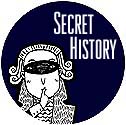
Comment
on this story |
 |

A terrorist's thumb, and other educational curios
by Jack Neely
The Custom House is a museum piece in itself. Built of marble in 1874, a reminder of federal presence when Klan insurrection in Tennessee was still a worry, it's a rare historic artifact you can actually touch just as much as you want to. A million people have touched it, over the years, as you can tell by the swayback marble steps on the Market Street side, eroded by a dozen decades of shoe leather.
For the last few years, its ground floor has housed the Museum of East Tennessee, a crowded but lively tour of the region's history, from Indian days to the World's Fair. The new exhibit at the Museum of East Tennessee History, opened just this week, is the cream of a recent exhibition at the Tennessee State Museum in Nashville. Knoxville's the first stop in its statewide tour. It's exactly what a museum exhibit should be: educational, vivid, interactive, diverse, and a little gruesome.
Now I wish I hadn't blown so much of my expensive week in Paris staring at Napoleon's death mask in the museum that's near his tomb. I remembered how startled I was to see his long-nosed, bald-headed profile in a glass box, near his stuffed dog, that I stood there examining it from all angles. I think I was surprised that, after all the romantic paintings and stories, Napoleon was a real guy. Somehow a good death mask can make a guy seem lively. It made a big impression on me.
But I could have skipped it, spent that time drinking Bordeaux on the Champs Elysee and waited to stare at Napoleon's death mask on Market Street. It's here, allegedly one of only three or four real copies in the world.
You might well wonder what the hell Napoleon has to do with East Tennessee history, but it's not all that much of a stretch. After all, for a few years Napoleon was emperor of the Louisiana territory—which bordered the new state of Tennessee, which then had its capital in Knoxville. Napoleon's decision to sell that whole big tract he'd never seen did wonders for Tennessee land values. Actually, though, his death mask is here only because it was in the old Nashville Museum, a Barnum-like 19th-century collection of curios.
There's also another death mask, of sorts, that's several centuries older. It's a sculpture of a human head, carved in sandstone by an ancient Tennessean. The poker-faced relic turned up in the dirt of rural Perry County. He stares across the six or seven centuries since his sculptor decided he was done, as if he's trying to get his bearings in this exhibit case. He's telling no secrets.
What the tour-group kids will talk about when they get back on their buses is in another case. It has to do with the antebellum outlaw John Murrell, thief of horses and slaves, the Tennessee "land pirate," alleged leader of the terrorist organization Murrell's Mystic Brotherhood. He died at the age of 38, not of gunshot wounds or a knotted rope, but of a bad cough.
For the next half-century, John Murrell his mystical self was on display at the University of Nashville Medical School, until 1895, when most of him was cremated, accidentally, when the building burned. Except, mysteriously, for Mr. Murrell's thumb, which was salvaged. And here it is.
There's a lot more great stuff here, including the original Tennessee State Flag—the very one presented as a prototype in 1905. LeRoy Reeves of Johnson City designed it, fortunately for us, without any symbolic references to the Civil War. Allegedly, its design with the asymmetrical display of three stars, representing East, Middle, and West Tennessee, is asymmetrical just to show that one would never seem to dominate the other two.
There's also, amazing to me, a sword and scabbard taken from the body of Patrick Ferguson, the British commander killed by rebellious proto-Tennesseans at the Battle of King's Mountain in 1780. And here are letters as interesting as many in the British Museum. One from Longfellow, one from Washington Irving. One from Aaron Burr to Andrew Jackson, written, of all places, in Maryville. One long one from Davy Crockett, two years before the Alamo, is harshly critical of "King Andrew" Jackson, "a name destitute of principle."
Among the more modern exhibits are a couple of lunch-counter stools. They're relics of the anti-segregation sit-ins in Nashville in 1960. The equally successful sit-ins in Knoxville the same year are also described in the exhibit literature, but there are no relics of them on display here. It makes you wonder what happened to the old Walgreen's lunch counter and stools that were auctioned off just last year when that Gay Street building was condemned for the Justice Center project.
The exhibit is here to celebrate the sesquicentennial of the Tennessee Historical Society, which was actually last year. (Ironically, the East Tennessee Historical Society claims to be older than that.)
The exhibit's heavily Nashvocentric, of course; among the few portraits here is a large one of a woman who co-founded Nashville's first Sunday School. You expect that from the THS, which is led mostly by Nashville-area folks. If there were a flag representing the Tennessee Historical Society, the middle-Tennessee star would always be decidedly on top, larger and prettier than the other two.
I can't gripe too much about that. The THS does their Nashvocentric best, and this exhibit is worth your time. I grew up visiting Nashville museums and shrines, deluded that Nashville was a far more interesting place than Knoxville could ever be, with a history far more profound. I know many who still swallow that line. As long as Nashville preserves its old neighborhoods as we knock ours down, maybe we deserve our place as hillbilly louts worshipping at Nashville's feet.

|





